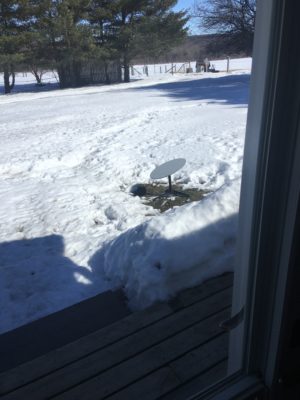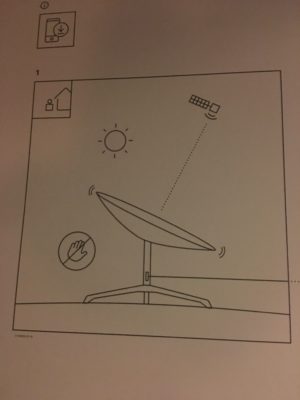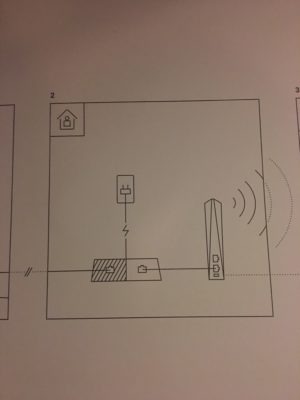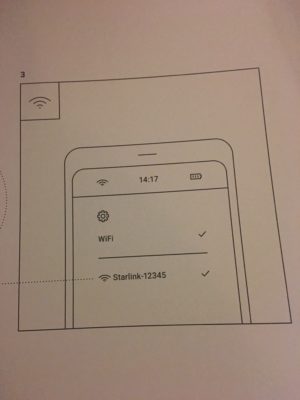The new technology is leaving pleasing results
For years, rural communities in Ontario have been struggling with internet connectivity. Despite government support to try and get more broadband and cell access, access to solid internet connections remains a problem.
Ivan Cohen, a senior account executive at Smart IP Technologies (a telecommunications service provider), says that because of poor service where he lives, he had to make an almost 260km commute to his office everyday to get access to the internet.
“I can now work from home if I choose to,” Cohen said. “I would rather take the three hours of driving time and turn it into three hours of productive time.”
Mark Goldberg, a telecommunications consultant, attributes the lack of rural connectivity to population density and the high-cost and high-risk companies would have to accept by installing broadband in less populated areas.
In January, Starlink, a broadband service created by SpaceX, launched a beta test for their internet service in the United States along with several international locations, including Eastern Ontario. This followed the release of 60 satellites into orbit to test connectivity.
Other companies like Amazon and Teleset are exploring similar satellite technologies to Starlink to increase broadband connection worldwide, slowly getting rid of the monopoly Canadian telecommunication organizations currently have.
The cluster of satellites, referred to as “constellations,” is quite unique; instead of orbiting where other satellites live they are in a low-earth orbit, 550km above earth compared to an astronomical 20,000km above earth for most GPS satellites.
This reduces the overall latency, or delay in transmission of data, resulting in seemingly faster data speeds. Starlink boasts 20 to 40 milliseconds latency, a drastic improvement from the recommended speed of 100 milliseconds for standard browsing or streaming.
Goldberg jokes that while some latency may not seem long or a problem, it can make an impact.
“It’s only half a second. But for example, if I’m talking to my wife and I say ‘I love you’ and she takes a half-second pause, you wonder ‘uh oh what happened,’ ” he said.
Goldberg says that another big difference between Starlink and other satellites is that it is not geo-stationary. Most satellites stay relatively in the same position, so dishes on land point at one particular spot and gain connection. Starlink instead has moving satellites, so the dish customers receive will connect and disconnect as satellites fly by in orbit.
Natasha McCormick, a Starlink customer, expresses her satisfaction with the new service.
“I have to say it’s been fantastic. It’s been way better than any service we had before,” she said. “There’s some quick periods of downtime but we don’t even notice it. Like it goes out but Netflix is still playing.”
Her husband found out about the Starlink beta stage online back in August, where she quickly put her email in to see whether or not she would get it.
“I was really interested because like most people in Northern Ontario, the internet is such a pain. So when they said ‘oh, we’ll be providing internet to northern areas,’ I figured let’s just check into this thinking that it’ll be years before anything happens,” she said.
“Then come January, I got an email saying it’s open in my area and to double-check my address to make sure it’s still eligible and it was and it took me to the order page and I went woo-hoo!”
When it opened up in Ontario, she received an email and was given the chance to officially order the Starlink satellite for her home out near Manitoulin Island. Two weeks later, it arrived with incredibly simple instructions; three images with no text.
Getting set up with ease and feeling relief
Cohen, who is also a Starlink user, says that the instructions to set up the internet connection were “idiot-proof” and similar to a plug-and-play device.
“Aligning this was a breeze, I sat it down in my front lawn plugged it in and the thing went (rrrgh) to the right angle and it was done.”
The “Starlink Kit” comes with a dish, which Cohen affectionately refers to as “Dishy,” a router, power supply, cables and a tripod to set up the dish. Once placed in a location with open access to the sky, you can download an app on your phone so you can monitor your service.

“Dishy” on the lawn of Cohen’s property.
Cohen recalls his excitement once the dish was fully set up, “I’m blown away, I remember on the weekend jumping up and down like ‘I got internet!’ ”
“[Afterwards] I did a one-hour video conference, my wife and I, with our granddaughter. It’s the first chance we’ve been able to do this,” he said. “And no hesitation on the video, just stellar stellar stellar, it worked perfectly.”
He also recalls being able to finally watch YouTube videos, “we’ve never been able to do this, aside from downloading it or play and pause until you rip your hair out.”
McCormick adds that for a household of seven, Starlink has been an “incredible experience” and was able to provide reliable service to the many different devices she and her family have.
She says that she once had two separate telecommunications companies providing service to her house but still suffered from poor connection. “We were paying $250 a month and it was barely acceptable, so this is obviously way better,” she laughs.
She’s noted since getting Starlink, there hasn’t been an issue. “We’ve been actually able to do Zoom meetings without cutting people off or unplugging things and frantically running around just trying to get into a meeting. So it’s been fantastic, we’re not leaving.”
Goldberg says that while Starlink may be a huge leap forward for rural communities, he doesn’t view this as being the future of broadband.
“I view it as part of the solution space for solving the urban-rural digital divide,” he says. “It’s an important tool in our toolkit, but it’s not for everyone. It may be too expensive for people who don’t have that option, some urban places don’t have room for a dish on their balcony.”
“I think there’s space in the marketplace for all of these [broadband] solutions,” Goldberg adds, emphasizing that urban communities have other broadband options that may not be available to rural communities. “It’s not something that should have been targeted to urban subscribers.”
McCormick agrees, saying Starlink won’t have as much of an impact for urban communities compared to rural. “It’s not meant for Toronto or maybe even Ottawa. The idea is that it’s meant for people who don’t have a good option, not for people who have fibre going right by their house.”
“I see people complaining or debating, and I’m like it’s not meant for you. For people who truly don’t have an option, it’s meant for them.”
In the interim, both Cohen and McCormick are thrilled with the gap in connectivity Starlink is addressing.
“It really is about whether you are able to do what you need to do, and if you can then that to me is good internet,” McCormick said.
“Just because we live up North doesn’t mean we don’t want internet. We all have the technology and we want to be able to use it and enjoy it.”








